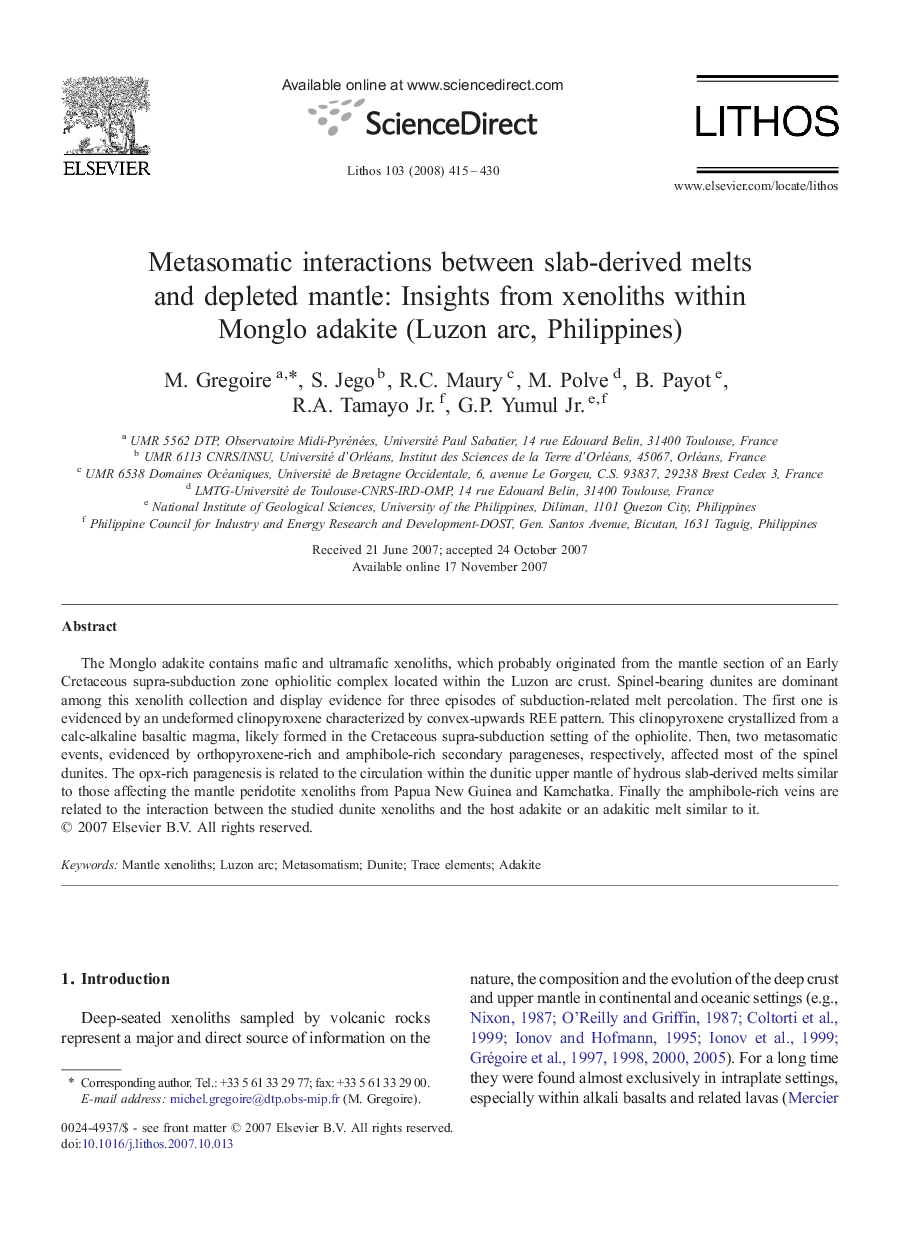| Article ID | Journal | Published Year | Pages | File Type |
|---|---|---|---|---|
| 4717462 | Lithos | 2008 | 16 Pages |
Abstract
The Monglo adakite contains mafic and ultramafic xenoliths, which probably originated from the mantle section of an Early Cretaceous supra-subduction zone ophiolitic complex located within the Luzon arc crust. Spinel-bearing dunites are dominant among this xenolith collection and display evidence for three episodes of subduction-related melt percolation. The first one is evidenced by an undeformed clinopyroxene characterized by convex-upwards REE pattern. This clinopyroxene crystallized from a calc-alkaline basaltic magma, likely formed in the Cretaceous supra-subduction setting of the ophiolite. Then, two metasomatic events, evidenced by orthopyroxene-rich and amphibole-rich secondary parageneses, respectively, affected most of the spinel dunites. The opx-rich paragenesis is related to the circulation within the dunitic upper mantle of hydrous slab-derived melts similar to those affecting the mantle peridotite xenoliths from Papua New Guinea and Kamchatka. Finally the amphibole-rich veins are related to the interaction between the studied dunite xenoliths and the host adakite or an adakitic melt similar to it.
Related Topics
Physical Sciences and Engineering
Earth and Planetary Sciences
Geochemistry and Petrology
Authors
M. Gregoire, S. Jego, R.C. Maury, M. Polve, B. Payot, R.A. Jr., G.P. Jr.,
